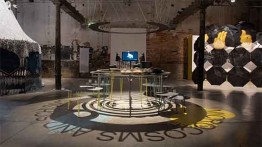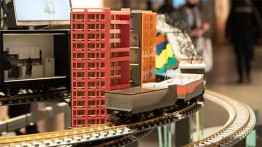The Irwin S. Chanin School of Architecture Goes to Venice
POSTED ON: June 9, 2021
Although the COVID-19 pandemic derailed original plans for architecture graduate students to travel and build their studio projects at the 2020 Venice Biennale, work by students and faculty of The Irwin S. Chanin School of Architecture still opened last month as part of the 2021 exhibition. Five architecture faculty – Hayley Eber AR'01, Associate Dean, Nora Akawi, Assistant Professor, Lydia Kallipoliti, Assistant Professor, Lauren Kogod, Associate Professor Adjunct, and Ife Vanable, Visiting Professor, continued to develop the individual research projects in answer to this year’s delayed Biennale theme: “How will we live together?”
The group projects, entitled "Microcosms & Schisms," specifically tackled how to co-habitat together in New York City as the global spread of COVID-19 radically altered the ways in which we engage with reality and occupy space. The collective scope of the project examined how spatial contracts are formed and sustained, as well as what forms of living they engender. By exploring New York City interiorities and exteriors, the projects aimed to consider the demarcation of space and how selective unification and segregation of people in space have always been fundamental to architecture. The work includes sites of sanctuary (where abolitionist and liberatory imaginaries are practiced); deep segregation (an analysis of disparate and fundamentally unequal New York City housing, particularly for many black and brown New Yorkers); parks (what is deemed the most optimistic models for a “New Spatial Contract” for co-existing together); and microclimates (the proliferation of indoor spaces and a critique of their role in politics, urbanism, and the climate crisis).
“The pandemic created an interesting set of challenges for us in dealing with how to exhibit the work, but more so executing a very collaborative and physical installation with the team scattered across the globe. In the end, it was fantastic to realize the project in Venice, amongst other great talents and such impressive and imaginative work,” says Associate Dean Eber.
The work was supported by grants from the IDC Foundation (originally for supporting student travel, but instead used for installation material costs after the Biennale was delayed).








